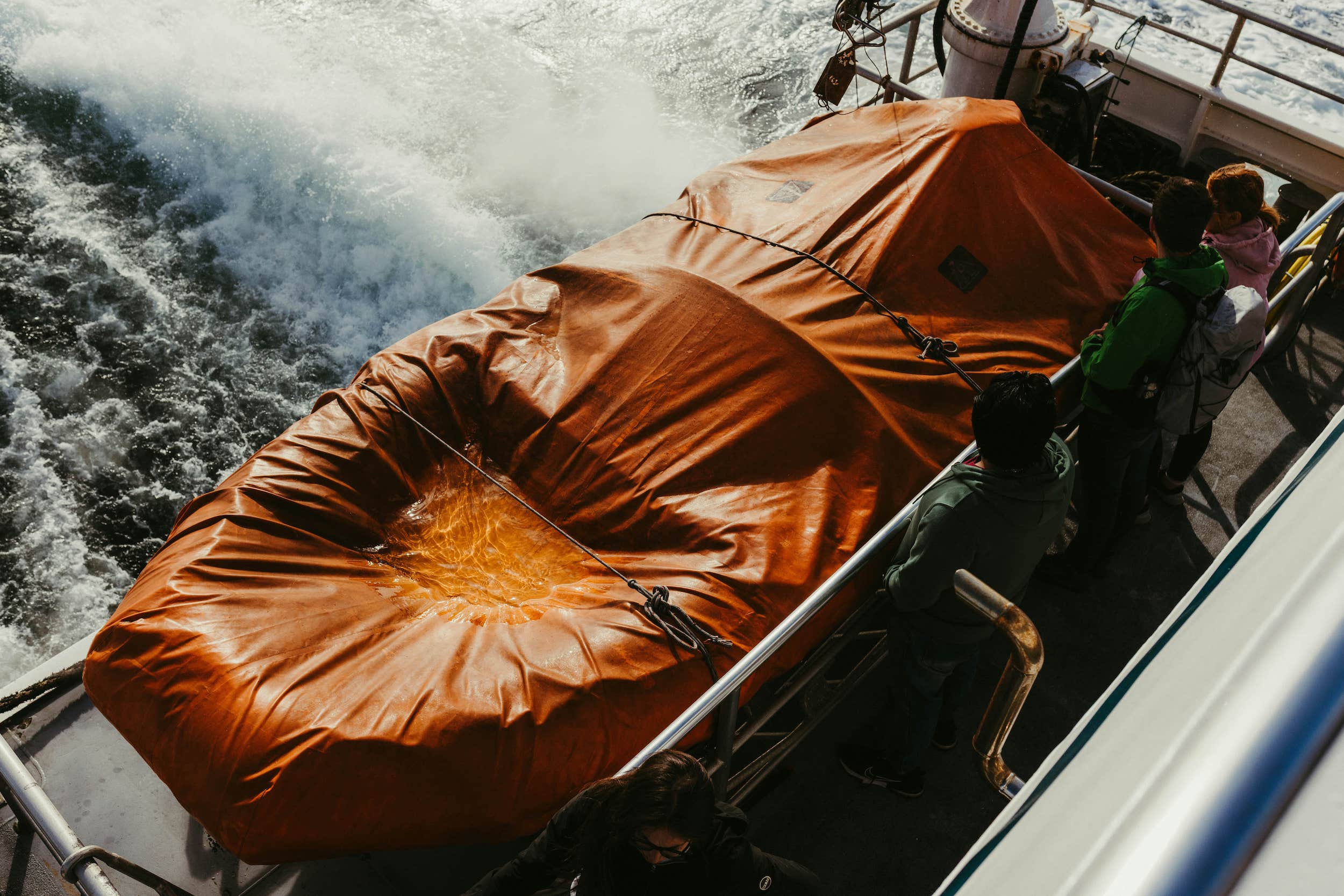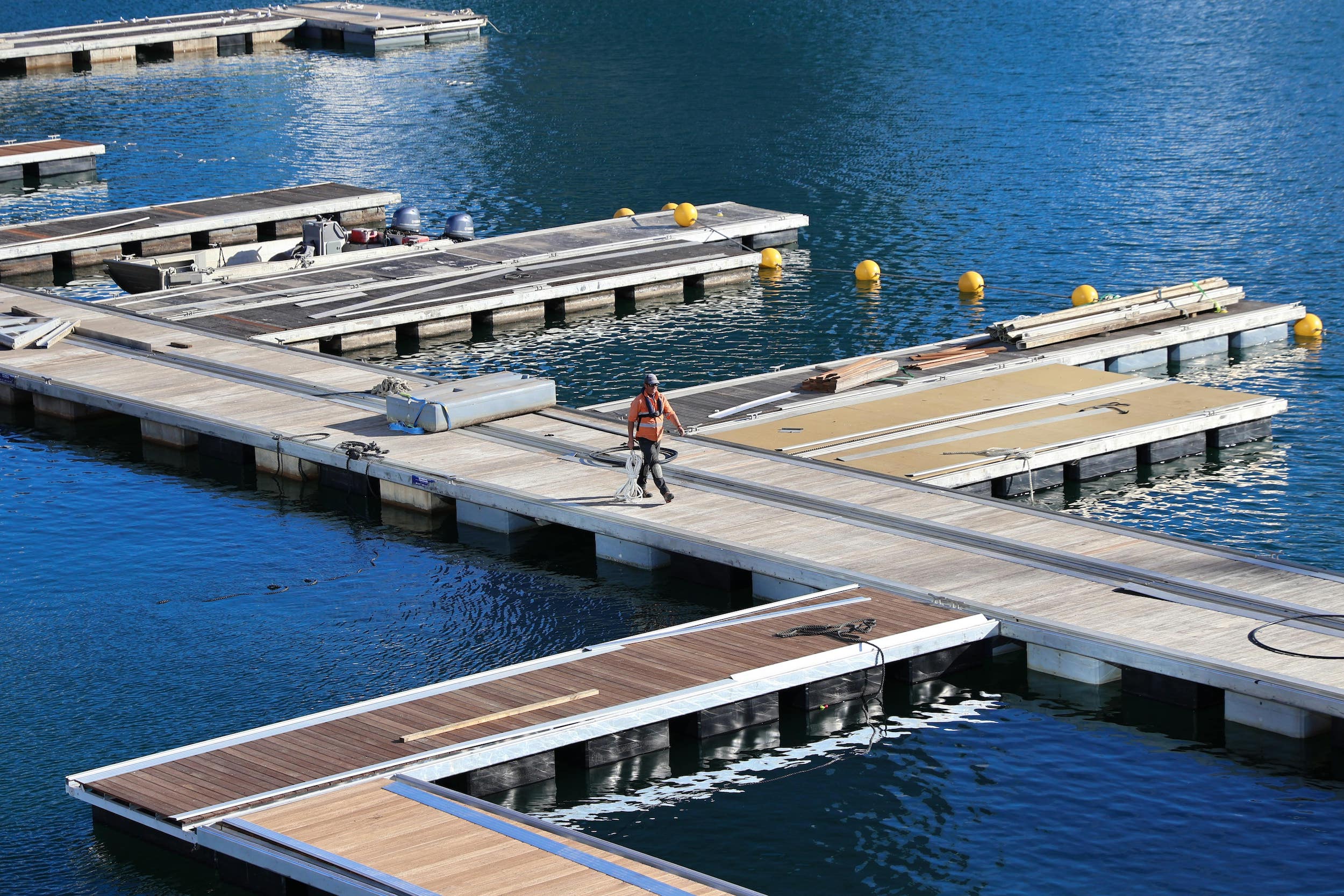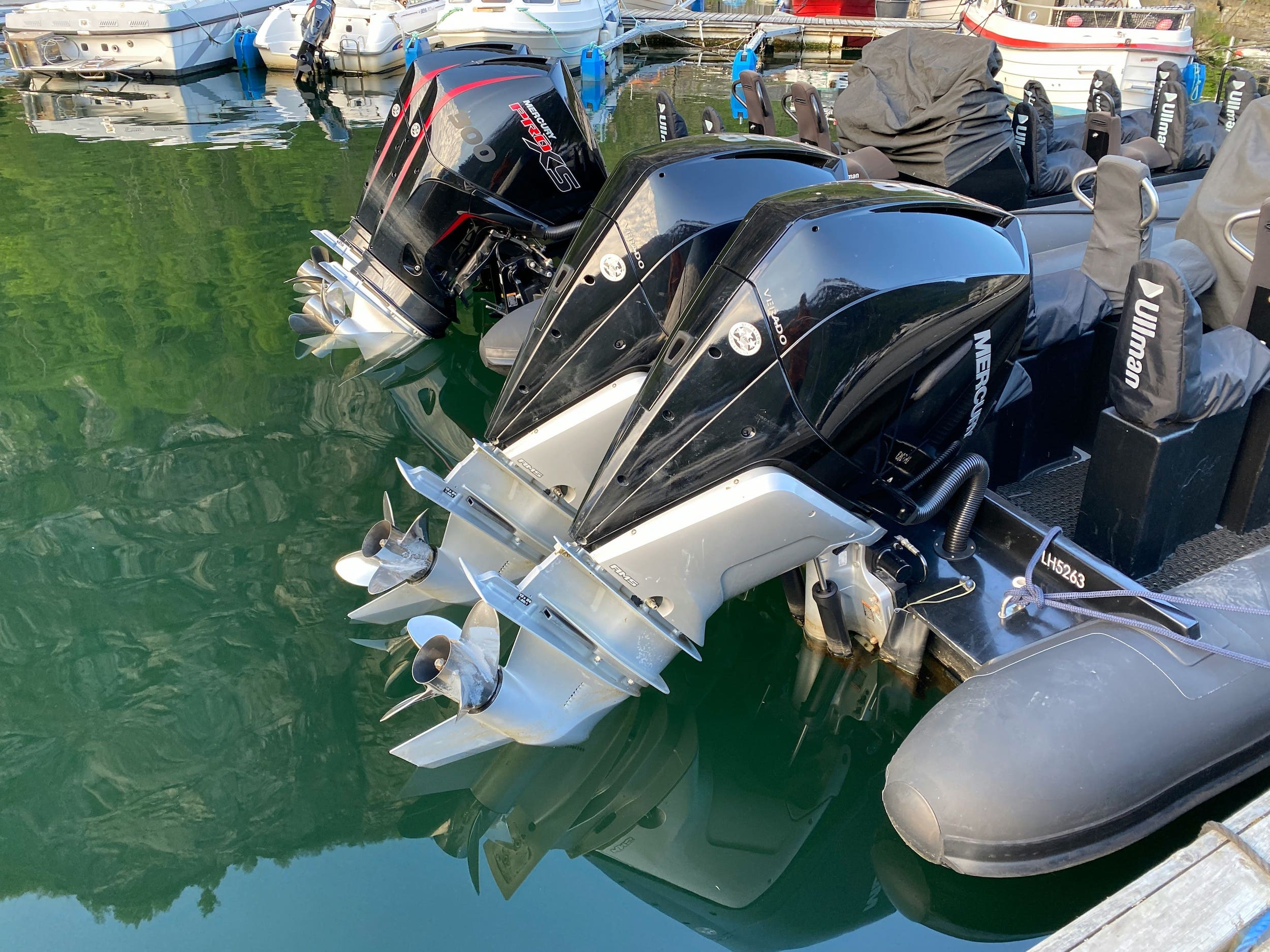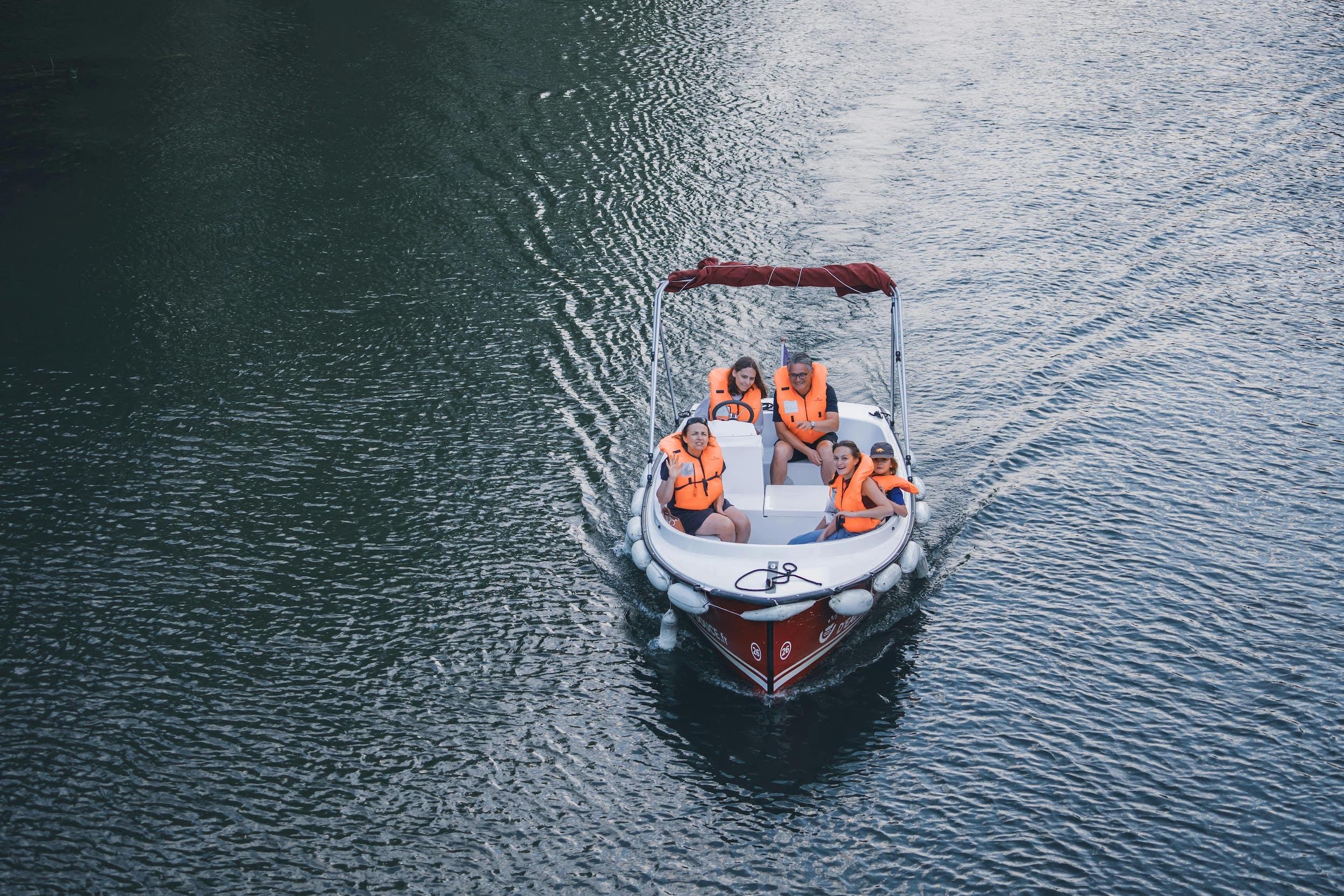Marine navigation, whether recreational or professional, involves inherent risks that every seafarer must know how to manage. Among the essential skills is the knowledge of warning signals at sea, true universal languages of distress and communication between navigators. These signals can save lives by allowing emergency services or nearby ships to be quickly alerted during a critical situation. Knowing their correct use and knowing how to interpret them then becomes a responsibility shared by all those who go to sea. The purpose of this article is to enable you to recognize and effectively use these various signals to ensure your safety and that of other browsers. It should also be remembered that maritime regulations impose strict legal obligations in terms of safety equipment and signaling devices. Each ship must have equipment adapted to its navigation area, in accordance with division 240, and every captain is required to provide assistance to a ship in distress in accordance with international conventions.
Understanding the different types of warning signals at sea
The control of maritime warning signals is based on the understanding of three main categories of signaling, each adapted to specific circumstances. These systems complement each other to offer several means of communication in case of emergency, thus considerably increasing the chances of detection and rescue. Some signals work day and night, others under specific weather conditions, and their effectiveness depends directly on how well navigators know them.
Visual signals
Visual signals are the oldest and most universal means of communication at sea. Parachute rockets represent the distress signal par excellence, recognized internationally. They launch vertically into the sky and deploy an intense red light suspended from a parachute, visible up to several tens of kilometers in good conditions. Their use should be reserved for situations of real distress, when people's lives are at risk and immediate assistance is needed. The launch is carried out by keeping the rocket at arm's length, facing the wind, at a slight angle to prevent it from falling back onto the boat.
Hand lights effectively complement parachute rockets, in particular to signal one's precise position to the approaching emergency services. These torches emit an intense red flame for about one minute, creating a powerful visual landmark. Their red color unambiguously indicates a situation of distress, while other colors such as white can be used to signal its presence without necessarily indicating danger. The smoke produced by these fires also helps with identification during the day.
Floating or hand-held smoke bombs are maritime warning devices that are particularly effective during the day. The floating smoke bombs fall into the water and drift, producing a very dense cloud of orange smoke, visible at a great distance for several minutes. This bright orange color contrasts sharply with the marine environment and makes it easier to locate by emergency planes or helicopters. Hand smoke generators work according to the same principle but are held in the hand, allowing you to control the direction of the smoke according to the wind.
Flags and flags follow specific international codes that every navigator should be familiar with. The flag “N” on “C” indicates distress according to the international code of maritime signals. Other combinations of pavilions make it possible to communicate a variety of messages, from maneuvering intentions to urgent medical needs. These signals remain relevant in particular for sailing boats, which do not always have electronic means of communication.
The sound signals
Using the horn, fog horn, or whistle is an essential way to communicate intentions or alert to impending danger. These devices emit powerful sounds that carry a long way, even in reduced visibility. Each ship must be equipped with a sound device adapted to its size, capable of producing the regulatory signals prescribed by the international maritime code.
The meaning of short and long sounds according to the maritime code follows a precise grammar that all sailors must understand. A short sound lasts about one second, while a prolonged sound lasts four to six seconds. For example, a short sound followed by a prolonged sound indicates that the ship is coming to starboard, while two short sounds followed by a prolonged sound indicate a reverse course. Five or more brief sounds are a warning signal indicating doubt about the intentions of the other vessel or a danger of collision.
The practical cases illustrate the importance of these sound signals in the prevention of accidents. In the event of an impending collision, when two ships are likely to collide despite the rules of navigation, at least five quick short shots must be issued to alert the other vessel. During an emergency maneuver, such as a sudden stop or a drastic change of course to avoid an obstacle, the appropriate signals inform other vessels of your intentions. In a situation of reduced visibility, regular signals every two minutes make it possible to signal its presence and to avoid collisions.
Electronic signals
Emergency beacons represent the most reliable modern technology for alerting emergency services. The EPIRB, or disaster location beacon, is automatically triggered when it comes into contact with water or can be activated manually. It emits a satellite signal allowing rescue coordination centers around the world to locate the ship in distress with remarkable precision. Its registration with the maritime authorities is essential so that emergency services can quickly identify the ship and its characteristics. The PLB beacon, which is more compact and individual, works according to the same principle but is attached to a person and can be carried during an evacuation from the ship.
Marine VHF is the preferred communication tool between ships and with coastal stations. Channel 16 remains the universal distress and call channel, constantly monitored by maritime authorities and numerous ships. In case of emergency, the emission of a “Mayday” message on this channel immediately triggers a coordinated emergency procedure. The VHF also makes it possible to establish a constant dialogue with the emergency services, to transmit detailed information on the situation and to receive precise instructions. Recent models incorporate digital selective calling functions that partially automate alerting.
AIS and DSC systems make it considerably easier to locate the boat in distress. The automatic identification system continuously transmits the position, speed and course of the ship, visible to all other equipped boats and by coastal stations. Digital selective calling makes it possible to automatically send a distress alert containing the GPS position of the ship, its identity and the nature of the emergency. These modern technologies, integrated into solutions such as the Oria Marine IoT box, which centralizes and optimizes the management of all these communication systems, considerably increase the chances of rapid rescue by instantly transmitting crucial information to the emergency services.
How to react to a warning signal at sea
Observing a distress signal at sea immediately places the witness in the face of an important maritime and moral responsibility. The reaction should be quick but methodical, as any inappropriate intervention can worsen the situation or create new dangers. Understanding the appropriate procedure allows you to act effectively while ensuring the safety of your own crew.
Identify the type of signal and assess the situation
Recognizing a distress signal from another ship first requires attention and knowledge of the different types of maritime signaling. A red rocket, orange smoke, repeated calls on VHF channel 16, or a distress flag are clear signs that a ship requires urgent assistance. It is also important to distinguish a genuine distress signal from other signals that may cause confusion, such as navigation lights or ordinary manoeuvring signals. The nature of the signal often provides an indication of the seriousness of the situation.
Maintaining visual or radio contact with the vessel in difficulty becomes a priority as soon as a distress signal is identified. If visual contact is possible, note the relative position of the vessel, its apparent heading, and any element allowing it to be precisely located. At the same time, trying to establish radio communication on channel 16 makes it possible to obtain direct information on the nature of the distress, the number of people on board and the urgency of the situation. This communication also helps to reassure people in distress by confirming that they have been spotted and that help is on the way.
Apply the support procedure
The rules of maritime law concerning the duty to assist constitute a fundamental principle of navigation. Every captain is legally required to rescue persons in distress at sea, as long as he can do so without seriously endangering his own ship, crew, or passengers. This obligation derives from long-standing international conventions and remains one of the pillars of maritime solidarity. Refusal to provide assistance may result in serious criminal sanctions in most maritime jurisdictions.
The steps of the assistance procedure always start by warning the professional emergency services, even if you are in a position to intervene directly. Contacting CROSS on VHF channel 16 or by telephone allows you to trigger an official coordination of rescue operations. Then, securing your own position becomes essential: check your route, slow down if necessary, assess weather and sea conditions, and ensure that your approach will not worsen the situation. Finally, acting without putting yourself in danger means constantly evaluating risks: approaching a ship on fire, sinking or in a very heavy sea requires specific skills and may require waiting for the arrival of better equipped emergency services.
Alert the maritime authorities
Contacting the CROSS or maritime rescue services must be done as soon as possible after identifying a distress situation. Maritime emergency numbers, in particular 196 in France from a telephone, allow coordination centers to be reached directly. However, VHF remains the preferred means because it allows instant communication and can be heard by other vessels likely to intervene. The call should start with the word “Mayday relay” if you are relaying a distress alert that you have witnessed, followed by your identification and description of the situation.
The information to be transmitted to the maritime authorities must be accurate and complete in order to facilitate effective intervention. The exact position of the ship in distress, expressed in GPS coordinates or in relation to identifiable waterways, is the priority information. The type of incident should be clearly described: fire, waterway, rudder damage, medical problem, or any other emergency. The number of people on board allows the emergency services to size their intervention. Other useful details include the description of the ship, its characteristics, local weather conditions, and anything that can help the emergency services locate and assist the ship in trouble.
Best practices for staying ready in case of emergency
Preparedness is the best defense against marine emergencies. A well-trained crew and properly maintained equipment greatly increase the chances of quickly resolving a problem or alerting emergency services effectively. This preparation should never be overlooked, even for short outings or in coastal areas.
Check your safety equipment regularly
Checking the expiration dates of rockets and smoke bombs should be part of the rituals of any responsible navigator. These pyrotechnic devices lose their effectiveness over time, and using them beyond the deadline may prove dangerous or ineffective. The regulations generally require flares to be valid for three years, but the dates on each item should be checked. Keeping a record of these dates makes it possible to anticipate the necessary renewals and to avoid ending up at sea with obsolete equipment.
The proper functioning of the VHF and EPIRB beacons requires regular checks according to a precise protocol. For VHF, testing the communication on a working channel with another ship or a coastal station makes it possible to ensure the quality of transmission and reception. Checking the condition of batteries, antennas, and connections is also part of preventive maintenance. EPIRB beacons should be tested according to manufacturer procedures, without triggering a real alert, and their batteries have a limited lifespan requiring periodic replacement. The registration of these beacons must be kept up to date with the competent authorities.
The secure and accessible storage of security hardware is an often overlooked but crucial aspect. Rockets and smoke bombs should be stored in a dry place, away from humidity and temperature variations, but easily accessible in case of emergency. Every crew member should know where this equipment is and how to access it quickly, even in the dark or in rough seas. Modern solutions like the Oria Marine IoT box can also include automatic reminders for periodic checks of safety equipment, thus facilitating the rigorous monitoring of maintenance.
Train the crew on warning signals
Practical exercises on board are the most effective method to ensure that everyone knows how to react in an emergency. Organizing simulations regularly makes it possible to familiarize the crew with the location of the equipment, its use and the procedures to follow. These exercises may include simulating a distress call on VHF, preparing a rocket for firing, or the fictional activation of a beacon. The objective is to create automations that will allow you to act quickly and effectively in real situations, when stress can compromise thinking.
Mandatory or recommended training varies according to the type of navigation practiced. Coastal licensing includes awareness of maritime warning signs and safety procedures, but this training is relatively basic. The Restricted Radiotelephone Operator Certificate offers more in-depth training on the use of VHF and communication procedures at sea, particularly valuable for offshore navigators. Marine safety and survival courses, offered by various nautical organizations, allow you to deepen these vital skills and to acquire real confidence in your ability to manage an emergency.
Anticipate risky situations
The weather consultation before departure is one of the most important preventive measures to avoid dangerous situations. Marine weather reports provide detailed information on sea conditions, wind strength and direction, visibility, and upcoming hazards. Understanding and interpreting these reports correctly allows you to make the decision to postpone an outing or adapt your itinerary to avoid risk areas. Neglecting this consultation unnecessarily exposes the ship and its crew to potentially dangerous conditions.
The navigation plan communicated to a loved one constitutes additional security that is often underestimated. Informing a person ashore of your planned itinerary, the estimated time of departure and return, as well as the composition of the crew, allows emergency services to be quickly triggered if you do not provide news at the scheduled time. This person can then alert CROSS with valuable information about your last known position and destination, making it much easier to find if there is a problem.
The application of preventive rules includes all behaviors and decisions that reduce risks at sea. This includes complying with navigation limitations based on weather conditions and vessel characteristics, maintaining a close watch throughout navigation, systematically checking the condition of the vessel prior to departure, and complying with maritime regulations. Wearing personal protective equipment such as life jackets in appropriate situations, avoiding alcohol consumption on board, and maintaining regular communication with land are also part of these good preventive practices.
Mistakes to avoid
Some distress signaling errors can have serious consequences, both for the person who caused them and for the marine community. Understanding these errors makes it possible to avoid them and to maintain the effectiveness of the marine rescue system.
Firing a rocket without a valid reason is a serious offense with multiple sanctions and risks. From a legal point of view, the unjustified triggering of an alert unnecessarily mobilizes emergency resources, potentially diverting resources from truly urgent interventions. This action may result in criminal proceedings and the obligation to reimburse emergency response costs, which often amount to thousands of euros. In practice, repeated false alarms can lead to the trivialization of distress signals, creating an effect of fatigue among emergency workers and potentially delaying responses to authentic alerts. A distress rocket should only be fired when lives are in real danger and immediate assistance is needed.
Forgetting to check the conformity of the hardware exposes the browser to significant risks in case of real need. Expired equipment may not function at a critical moment, leaving the ship in distress without effective alerting. Rockets whose pyrotechnic charge has aged may not ignite, explode prematurely, or have a very limited range. Exhausted EPIRB beacon batteries make these devices useless, while a poorly maintained VHF can experience transmission failures. Beyond the safety risk, sailing without compliant regulatory material also exposes you to administrative sanctions during checks at sea.
Neglecting on-board training is perhaps the most insidious mistake because it only becomes apparent in emergency situations. A team member who first discovers a distress rocket when it is time to use it risks making dangerous mistakes, such as holding it the wrong way or setting it off near flammable materials. A lack of knowledge of radio procedures can lead to confusing communications that delay emergency response. This shortcoming becomes particularly critical when the captain himself is in trouble, injured, or in the water, and when other crew members must take over to alert and coordinate the emergency services.
FAQ — Frequently asked questions about warning signs at sea
What are the mandatory distress signals on board?
Mandatory equipment varies according to the navigation zone defined by division 240. In coastal navigation, the minimum generally includes three hand-held red lights and two floating smoke bombs. For offshore navigation, three parachute rockets must be added. A marine VHF and an emergency beacon become mandatory beyond certain distances from the coast. These minimum requirements form a basis, and many mariners are wisely choosing to bring more alert devices to maximize their safety.
What is the average lifespan of a distress rocket?
A distress rocket is valid for three years from the date of manufacture, which is clearly indicated on the packaging. After this time, even if the rocket seems to be in good condition, its reliability is no longer guaranteed and it must be replaced. Expired rockets must be returned to specialized collection points, never thrown into regular garbage due to their pyrotechnic nature. Keeping your stock up to date therefore requires regular renewal, approximately every three years depending on use and maintenance.
On which VHF channel to call the emergency services?
Channel 16 is the international marine VHF distress and call channel, continuously monitored by maritime authorities and numerous ships. Any distress call should be issued on this channel beginning with the word “Mayday” repeated three times, followed by the identification of the vessel and the description of the situation. Once contact has been established with emergency services, they may ask to switch to another working channel to release channel 16, but the initial alert must always be on this universally recognized frequency.
Can smoke be used day and night?
Smoke bombs remain mainly effective during the day, when their thick orange smoke is clearly visible from the sky and the sea. Their visibility at night remains very limited because they do not emit significant light. For night alerts, parachute rockets and hand fires, which produce intense red light, are infinitely more appropriate. Ideally, a ship should have both types of signals in order to be able to adapt to circumstances, whether it is a day or night emergency.
What is the difference between an EPIRB tag and a PLB?
An EPIRB beacon attaches to the ship and is automatically triggered when it comes into contact with water or can be activated manually. It emits a satellite signal indicating the position of the ship in distress, allowing emergency services to locate the boat. A PLB, smaller and individual, is carried around and is used to locate a person, particularly useful if someone falls into the water or during the evacuation of the ship. The main difference therefore lies in the scale of the alert: the entire ship for the EPIRB, a specific individual for the PLB.
What should I do if I see a distress signal without being able to intervene?
Even if you cannot intervene directly, your role remains crucial in triggering emergency services. Contact CROSS immediately on VHF channel 16 or by phone at 196, describing precisely what you observed: type of signal, exact or relative position, time of observation, and any information allowing to identify the ship in distress. Continue to monitor the area if possible and report any changes in the situation. Your testimony can make the difference between quick intervention and lengthy research, even if you can't provide assistance directly.
Conclusion
Mastering warning signals at sea is much more than just a technical skill among others in a navigator's arsenal. This knowledge is a fundamental pillar of maritime safety, ensuring that every person who sets out to sea has the universal means of communication needed to alert, rescue, or be rescued. The diversity of signals available, whether visual, audio or electronic, provides valuable redundancy that considerably increases the chances of survival in a critical situation. Each type of signal responds to specific circumstances, and their collective control makes it possible to deal with almost all conceivable emergency scenarios.
Useful resources remain numerous and accessible for anyone who wants to deepen their knowledge and preparation. The CROSS ensures a constant watch on French waters and coordinates rescue operations with professionalism and efficiency. The SNSM, with its thousands of passionate and dedicated volunteers, intervenes daily to help navigators in difficulty. The numerous nautical courses available, from coastal licenses to advanced safety courses, allow you to acquire and maintain the skills essential for safe navigation. These organizations and training courses constitute an indispensable safety network for all boaters.
The call for responsibility and prevention is obvious for any conscious navigator. Going to sea implies accepting a share of risk, but also taking full responsibility for minimizing this risk through rigorous preparation and constant vigilance. Checking your equipment, training your crew, consulting the weather forecast, communicating your navigation plan and complying with regulations are not bureaucratic constraints but common sense actions that save lives. Safer navigation results from the collective commitment of all seafarers to respect these fundamental principles and to maintain the solidarity that has always characterized the maritime community. The sea offers incomparable joys, but in return it requires respect, humility and preparation.









